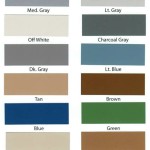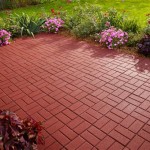How To Smooth Rough Concrete Patio
A rough concrete patio can be unsightly and uncomfortable to walk on. Fortunately, smoothing out a rough concrete patio is a relatively straightforward process that can be completed by a homeowner with the right tools and techniques. This article will provide a comprehensive guide on how to smooth rough concrete patio, equipping you with the necessary information to tackle this project successfully.
Assessing the Roughness
Before embarking on the smoothing process, it is crucial to assess the nature and extent of the roughness. This will dictate the appropriate tools and techniques required. Consider the following factors:
- Type of roughness: Is the roughness due to uneven surface, exposed aggregate, or cracks?
- Severity of roughness: Is the roughness minor, moderate, or severe?
- Size of the patio: The size of the patio will impact the time and effort required for smoothing.
Based on your assessment, you can choose the most suitable approach for smoothing the concrete. For minor roughness, a simple sanding or grinding process might suffice. For moderate to severe roughness, you may need to use a concrete resurfacer or apply a leveling compound.
Preparation and Tools
Once you have assessed the roughness and determined the appropriate approach, you need to properly prepare the patio and gather the necessary tools. This involves:
- Cleaning the surface: Remove any dirt, debris, and loose materials from the concrete surface using a broom, brush, or pressure washer.
- Repairing cracks: Fill any cracks or holes with a concrete patching compound or epoxy. Allow the filler to cure completely before proceeding to the next step.
- Gathering tools: Depending on the chosen approach, you will need tools such as a power sander, grinder, concrete resurfacer, trowel, and leveling compound.
Smoothing Techniques
Once the patio is prepared, you can start the smoothing process. There are several methods available, each suited for different levels of roughness:
Sanding or Grinding
For minor roughness, sanding or grinding can effectively smooth the surface. Use a power sander with a coarse-grit sandpaper or a grinder fitted with a diamond blade. Work in sections, overlapping each pass for a consistent finish.
Concrete Resurfacer
For moderate to severe roughness, a concrete resurfacer can be used to create a new, smooth surface. Apply the resurfacer according to the manufacturer's instructions, using a trowel to spread and level it evenly. Allow the resurfacer to cure completely before proceeding.
Leveling Compound
If you need to fill in significant unevenness or create a perfectly level surface, a leveling compound is the optimal solution. Apply the compound using a trowel, allowing it to settle and harden before sanding or smoothing it further.
Finishing Touches
After completing the smoothing process, you can enhance the appearance and durability of your concrete patio by applying a sealant or paint. This will protect the concrete from stains, moisture damage, and wear and tear. Apply the sealant or paint according to the manufacturer's instructions, ensuring a smooth and even application. Allow the coating to dry completely before using the patio.
It is important to note that the specific methods and techniques may vary depending on the type of concrete, the severity of the roughness, and the desired finish. Always consult with a professional concrete contractor for personalized advice and assistance.

Smoothing Rough Concrete

How To Smooth Concrete After It Dries 7 Ways Rough

Why This Concrete Patio Went From Rough To Glass Smooth

How To Finish Concrete Diy Family Handyman

How To Sand Concrete For A Smooth Finish Angi

Types Of Concrete Surface Finishes The Guy

How To Sand Concrete For A Smooth Finish Angi

6 Types Of Concrete Finishes Finishing Techniques

What Is Broom Finish Concrete

How To Finish Concrete Diy Family Handyman
See Also








